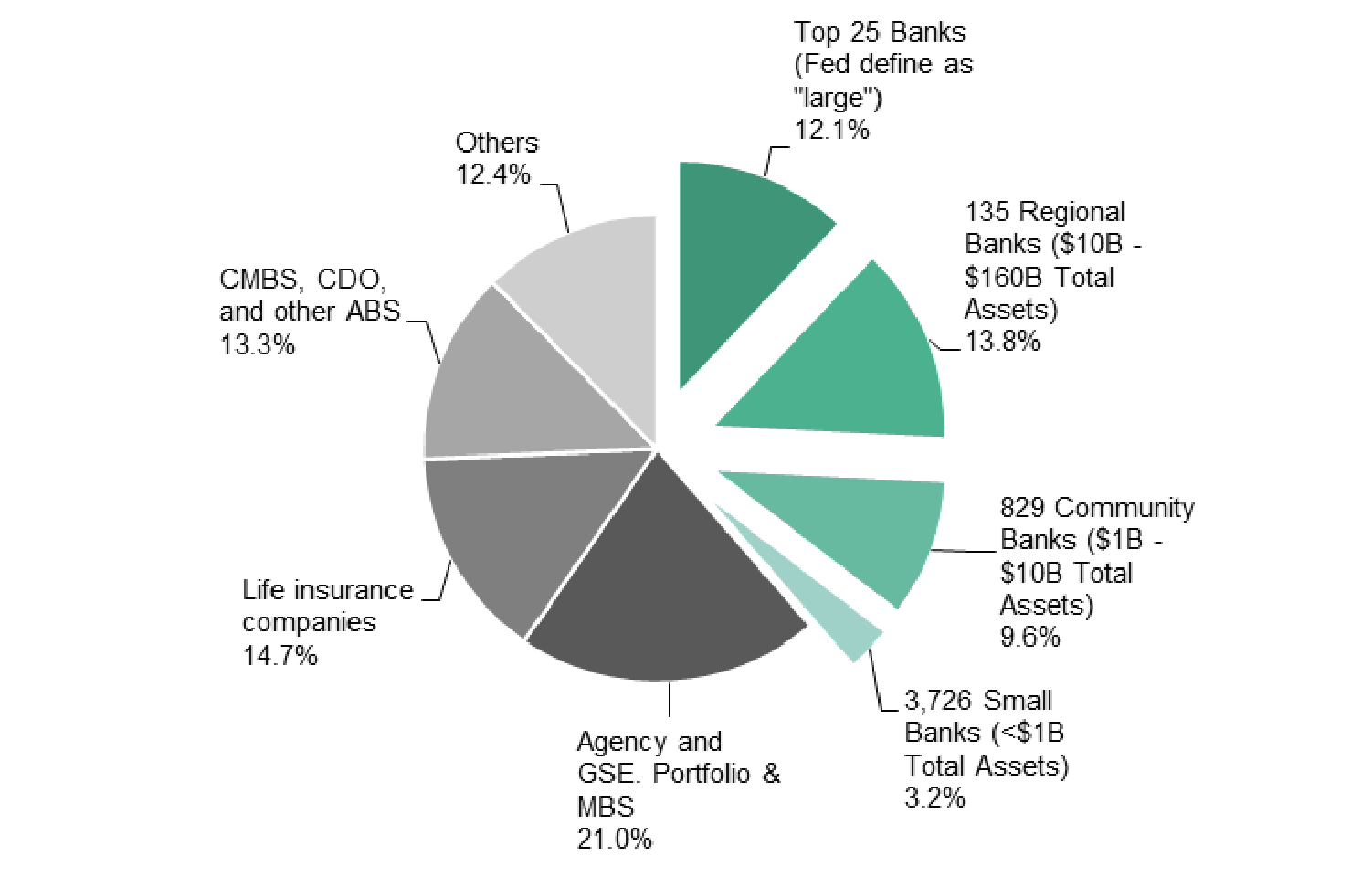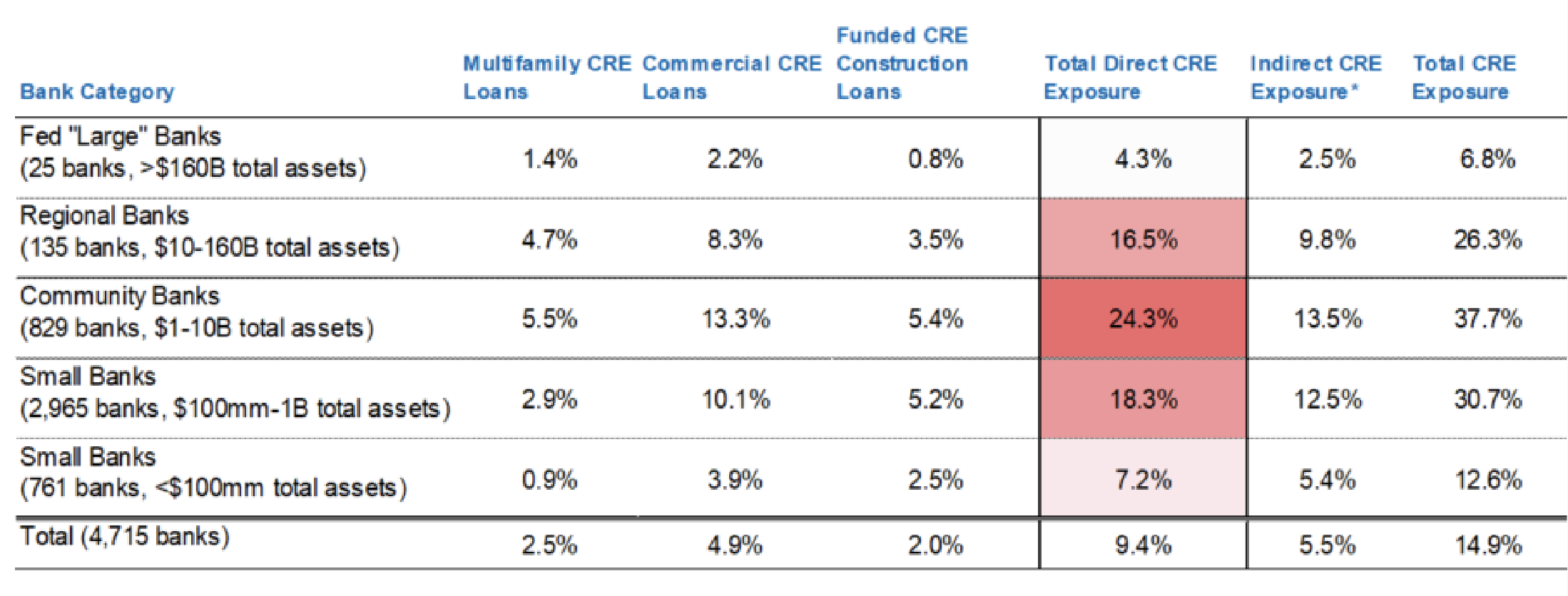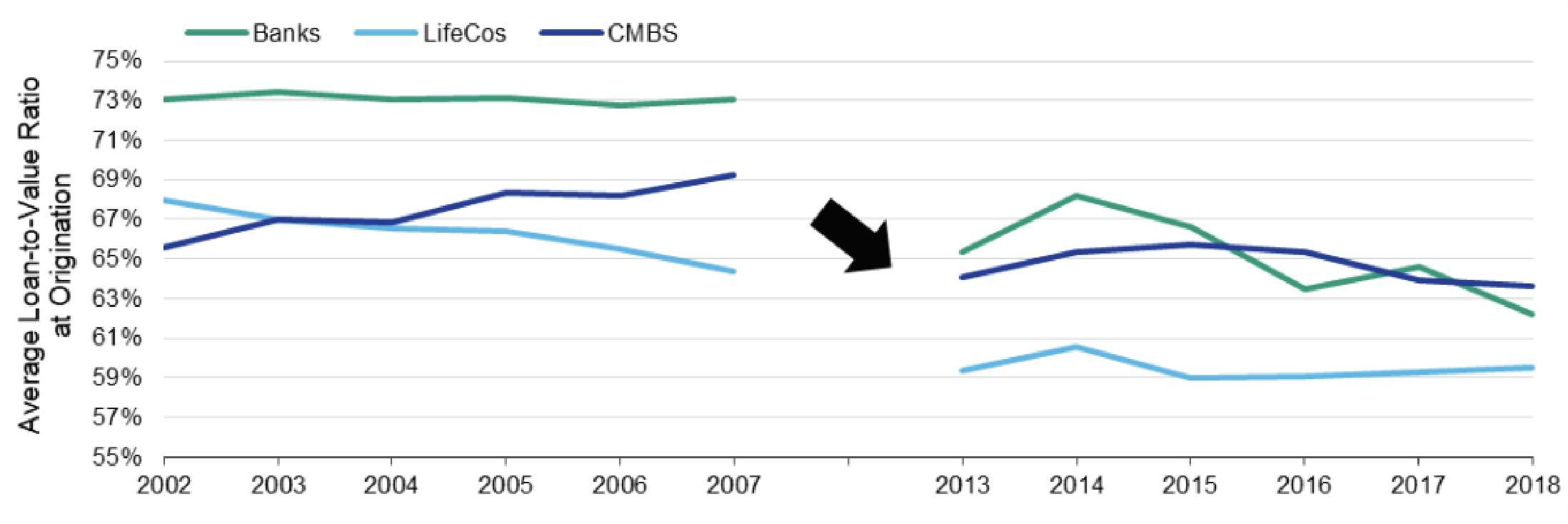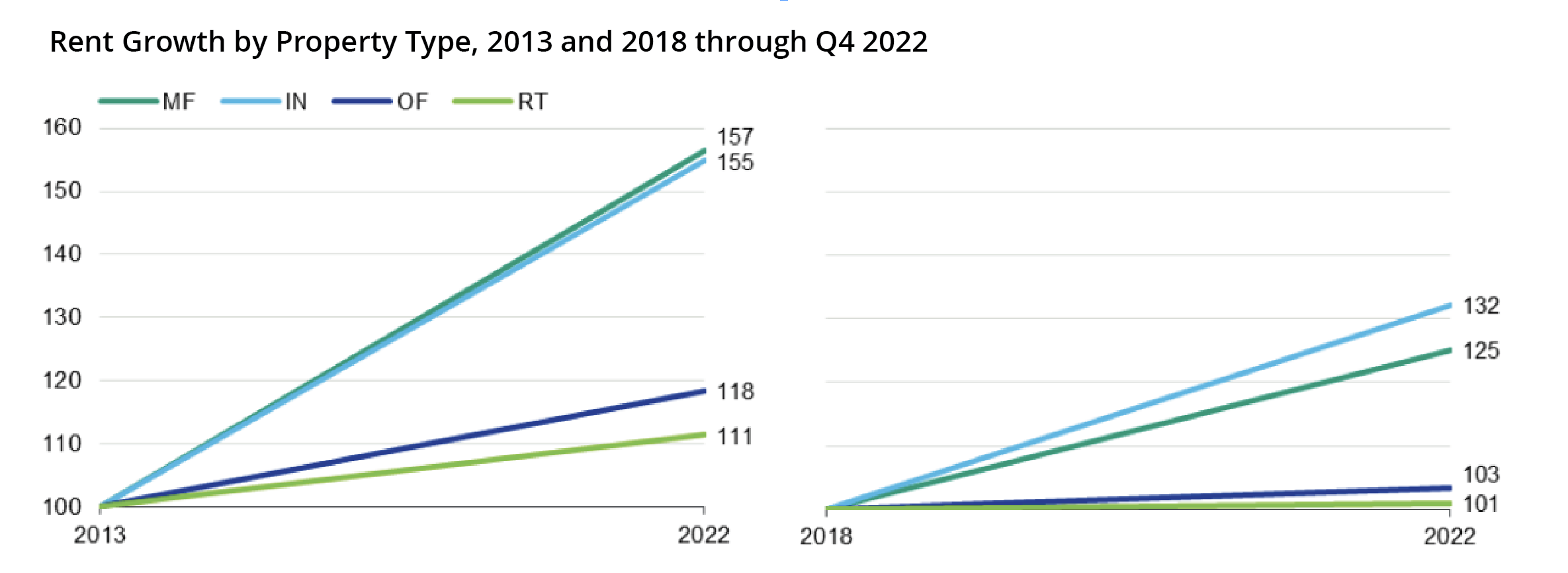CRE Debt Outstanding & Banks Exposure
Following the collapse of SVB and Signature Bank, investors are now increasingly scrutinizing regional banks’ commercial real estate (“CRE”) exposure. Several financial press articles have posited that US CRE is the next shoe to drop and may lead to a significant credit crunch and potentially additional bank failures.
We aim to quantify banks’ exposure to CRE and assess the potential for realized loan losses.
Including multi-family properties, US CRE debt outstanding is estimated at $4.5 trillion as of March 2023. Banks hold roughly 40% of CRE debt with the majority of that held at regional and community banks.

However, this share is much higher at regional and community banks (16.5% to 24.3%).

CRE Debt Maturities
While the average share of CRE loans as a percentage of total assets at regional and community banks suggests manageable exposures, there is wide distribution around that average.
For instance, 33% of regional banks and 44% of community banks have CRE loan exposure at 25%-50% of total assets.
Given that these banks are levered at roughly 8x-10x equity, significant write-downs of CRE loans could substantially reduce these banks’ equity positions.
$1.3 trillion of outstanding CRE debt (roughly 30%) is maturing by year-end 2024 with roughly an additional $500mm per year maturing through 2027.
Most of the near-term maturing debt was originated in the 2013 through 2018 timeframe. Given the significant rise in interest rates since then, analysts are worried that properties in troubled sectors (predominantly office and some areas of retail) may not be able to refinance maturing debt without significant additional sponsor equity contributions and may therefore default.

CRE Leverage and Rent Growth
CRE property values are beginning to decline and loan defaults are likely to increase.
According to Green Street Advisors, property prices across CRE have declined by 15% from 2022 peaks with office experiencing the largest decline at 25%. Green Street bases its commercial property index on transaction prices vs. appraisal data.
The NCREIF Index was down 3.5% in Q4 2022, the first meaningful quarterly decline since 2009. The NCREIF index is based upon appraisal data which tends to be lagging and less volatile than transaction-based data.
Real estate professionals expect the NCREIF Index to decline 5.3% in 2023 but rise 4.5% in 2024 and 6.4% in 2025. Office is expected to be the worst performing asset class in 2023 at -9.1% followed by industrial and apartments at -5.1% each.
However, relative to the GFC, there are several credit mitigants for lenders.
Loans were originated at lower LTVs (on average 5%-10% lower than those originated prior to the GFC).

Most CRE has benefitted from strong rent growth over the past several years (especially for multi-family and industrial properties). This should support higher values upon loan refinance in 2023 and 2024 despite increased cap-rates.


